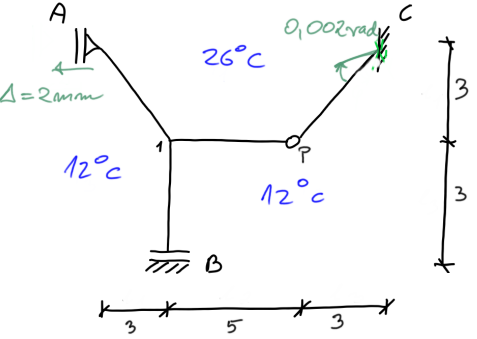Edupanda » Mechanika budowli » Method of forces » Frames - thermal and geometrical loads
List of examples
Example 1
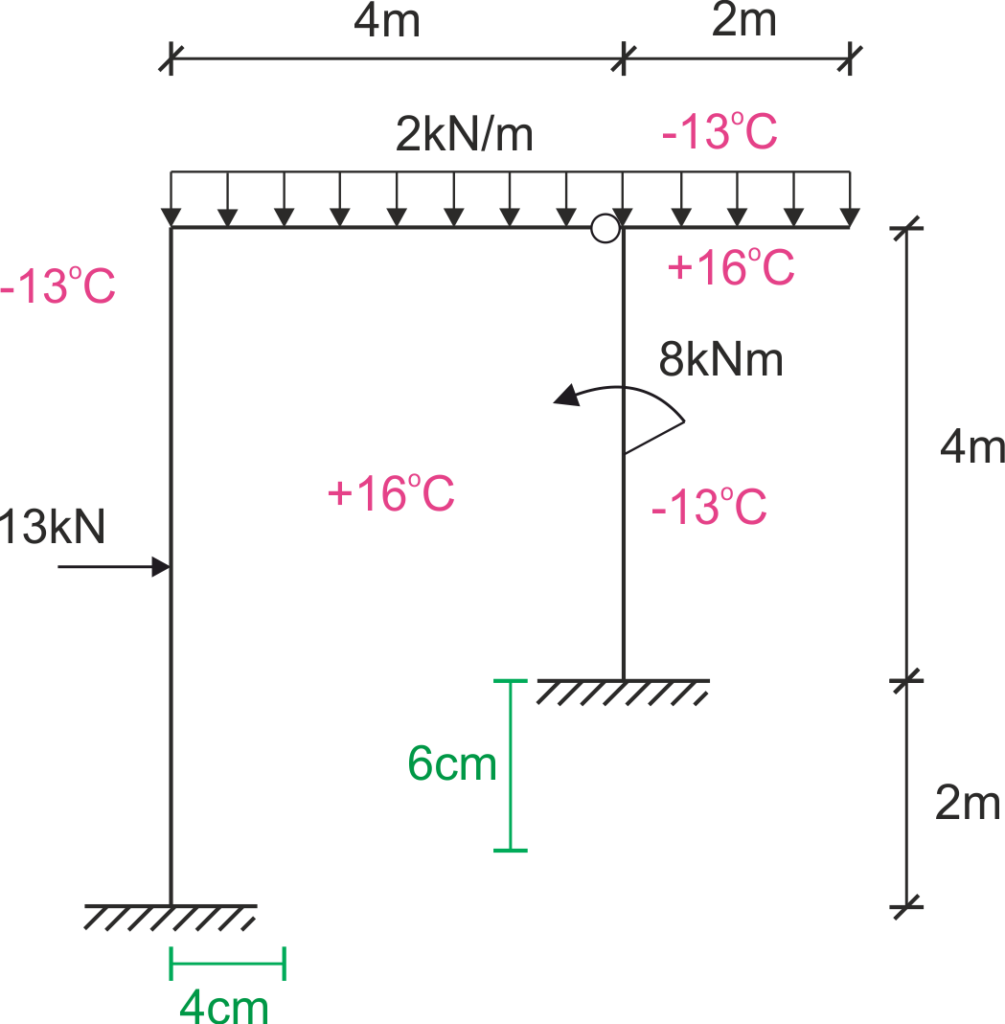
For the given frame, determine the internal force diagrams (M, N, T) for the following types of interactions:
a) Active interactions,
b) Temperature effect,
c) Settlement of supports.
For each type of interaction, use a different reference system. Perform static and displacement compatibility checks for case b and c.
Assume a specific material and cross-section.
Example 2
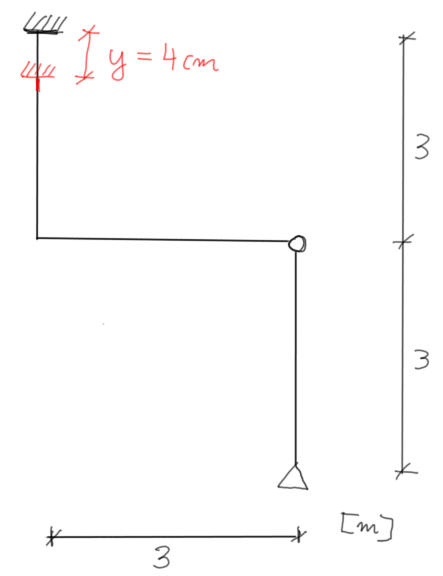
Determine final charts for M, Q, and N separately for continuous loading, concentrated force, and support settlement. Perform a kinematic verification for each case.
Example 3
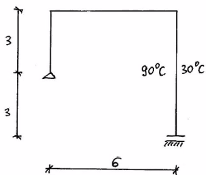
Calculate M, Q, and N separately for the loads caused by support displacements, uniform and non-uniform temperature. Assume a rectangular cross-section of 0.2×0.8m. Assume E=20 GPa, installation temperature tm=10*C, and thermal expansion coefficient alpha=0.00001 1/*C.
Example 4
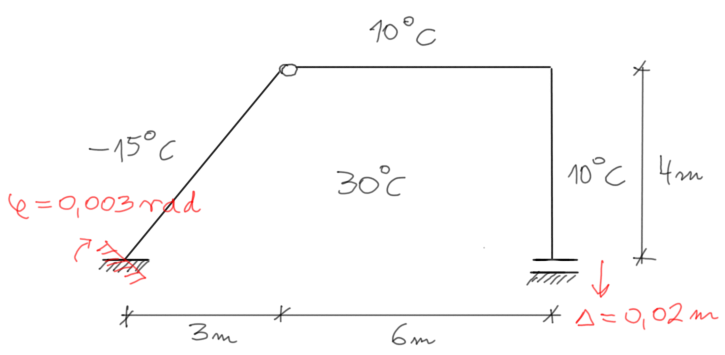
Calculate M, Q, and N separately for the loads caused by support displacements, uniform and non-uniform temperature. Assume a rectangular cross-section of 0.2×0.8m. Take E=20 GPa, assembly temperature tm=10°C, and thermal expansion coefficient alpha=0.00001 1/°C.
Example 5
Determine M, Q, N separately for the loads caused by support displacements, thermal loads due to uniform and non-uniform temperature. Assume a rectangular cross-section of 0.2×0.8m. Assume E=20 GPa, coefficient of thermal expansion alpha=0.00001 1/°C.
Example 6
Determine M, Q, N separately for the loads
1) mechanical loads
2) caused by support displacements
3) thermal loads.
Assume cross-section IPN 200, E=200 GPa, tm=0, alpha=0.00001
Example 7
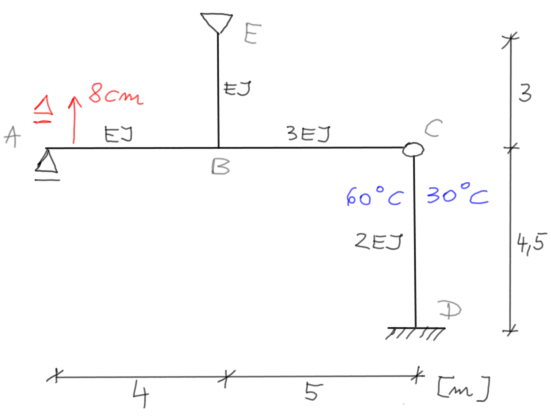
Determine M, Q, N separately for the following loads:
1) mechanical loads
2) loads caused by support displacements
3) thermal loads.
Assume a rectangular cross-section of 0.2 × 0.2m. Assume E=20 GPa, tm=0°C, thermal expansion coefficient alpha=0.000012 1/°C.
Example 8
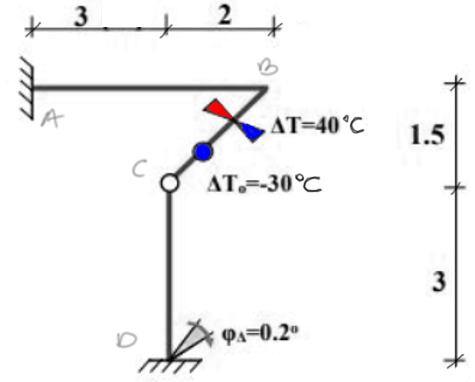
Determine M, Q, and N separately for the following loads
1) mechanical loads
2) loads caused by support displacements
3) thermal loads.
Assume IPN 200 section, E=200 GPa, tm=0, alpha=0.000012
